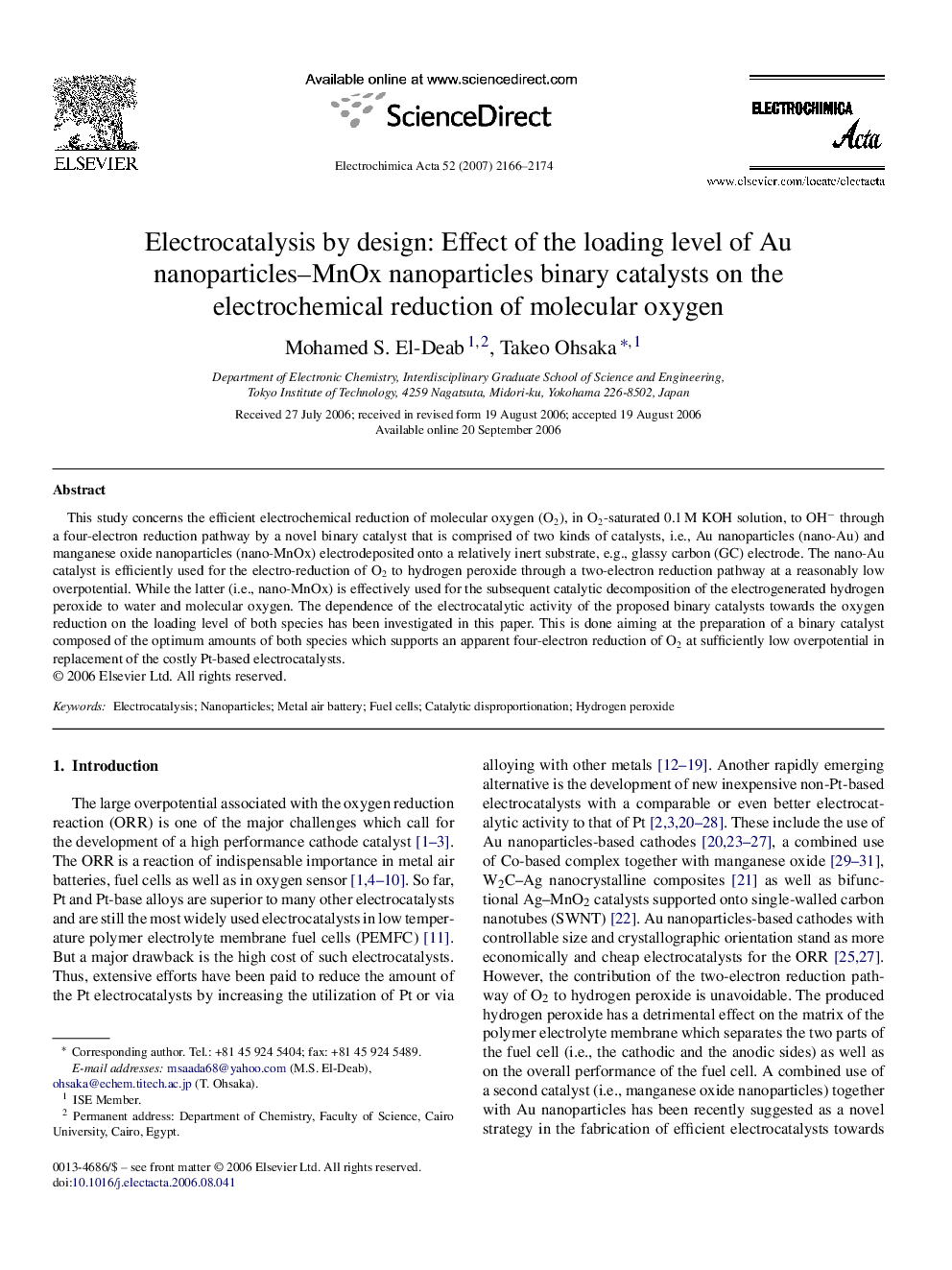| Article ID | Journal | Published Year | Pages | File Type |
|---|---|---|---|---|
| 196425 | Electrochimica Acta | 2007 | 9 Pages |
This study concerns the efficient electrochemical reduction of molecular oxygen (O2), in O2-saturated 0.1 M KOH solution, to OH− through a four-electron reduction pathway by a novel binary catalyst that is comprised of two kinds of catalysts, i.e., Au nanoparticles (nano-Au) and manganese oxide nanoparticles (nano-MnOx) electrodeposited onto a relatively inert substrate, e.g., glassy carbon (GC) electrode. The nano-Au catalyst is efficiently used for the electro-reduction of O2 to hydrogen peroxide through a two-electron reduction pathway at a reasonably low overpotential. While the latter (i.e., nano-MnOx) is effectively used for the subsequent catalytic decomposition of the electrogenerated hydrogen peroxide to water and molecular oxygen. The dependence of the electrocatalytic activity of the proposed binary catalysts towards the oxygen reduction on the loading level of both species has been investigated in this paper. This is done aiming at the preparation of a binary catalyst composed of the optimum amounts of both species which supports an apparent four-electron reduction of O2 at sufficiently low overpotential in replacement of the costly Pt-based electrocatalysts.
